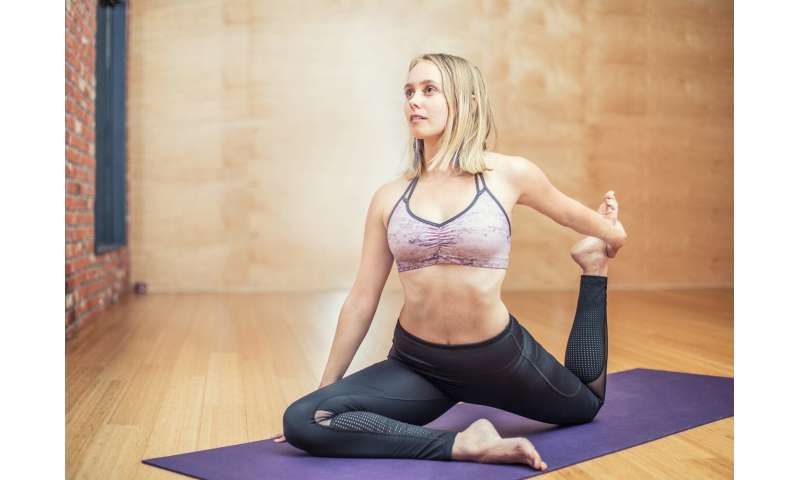Temps up, blood pressures down in hot yoga study

Taking hot yoga classes lowered blood pressure in a small study of adults with elevated or stage 1 hypertension, according to preliminary research presented at the American Heart Association’s Hypertension 2019 Scientific Sessions.
While there is evidence of regular, room-temperature yoga’s positive effect on blood pressure, little is known about hot yoga’s potential impact on blood pressure, according to the study researchers.
“The findings are very preliminary at this point, yet they’re somewhat promising in terms of unveiling another unique way to lower blood pressure in adults without the use of medications,” said Stacy Hunter, Ph.D., study author and assistant professor and lab director of the cardiovascular physiology lab at Texas State University in San Marcos, Texas. “Hot yoga is gaining popularity, and we’re even seeing other styles of yoga, like Vinyasa and power yoga, being offered in heated studios.”
Hot yoga is a modern practice, typically offered in a hot, humid atmosphere, with room temperatures around 105 degrees Fahrenheit. Some believe the practice of hot yoga replicates the heat and humidity of India, where yoga originated, while others look at the excessive sweating as a way to rid the body of impurities.
Hunter and colleagues recruited 10 men and women, between ages 20 and 65 years. Participants had either elevated blood pressure (systolic blood pressure between 120 mmHg to 129 mmHg and diastolic pressure less than 80 mmHg) or stage 1 hypertension (130 mmHg to 139 mmHg systolic and 80 mmHg to 89 mmHg diastolic pressure.) These adults were not taking any type of blood pressure medication and had been sedentary—meaning they had not engaged in a regular physical fitness routine—for at least six months before the study.
Researchers randomly assigned five participants to take 12 weeks of three-times-weekly hour-long hot yoga classes and they assigned the other five to a control group of no yoga classes. They compared average blood pressures of the two groups after the 12 weeks. The researchers looked at average 24-hour blood pressure readings, as well as perceived stress and vascular function of participants in both groups.
At 12 weeks, they found:
- Systolic blood pressure dropped from an average 126 mmHg at the study’s start to 121 mmHg after 12 weeks of hot yoga. Average diastolic pressure also decreased from 82 mmHg to 79 mmHg in the hot yoga group.
- Average blood pressure did not change among the five adults in the control group, those who did not take hot yoga classes.
- Perceived stress levels fell among those in the hot yoga group but not in the non-yoga group.
- While waking systolic and diastolic pressures fell in the hot yoga group, blood pressure readings taken during sleep did not change.
- There were no changes in vascular function in either group.
“The results of our study start the conversation that hot yoga could be feasible and effective in terms of reducing blood pressure without medication,” Hunter said. “However, larger studies need to be done before we can say with confidence that hot yoga has a positive impact on blood pressure.”
Source: Read Full Article



